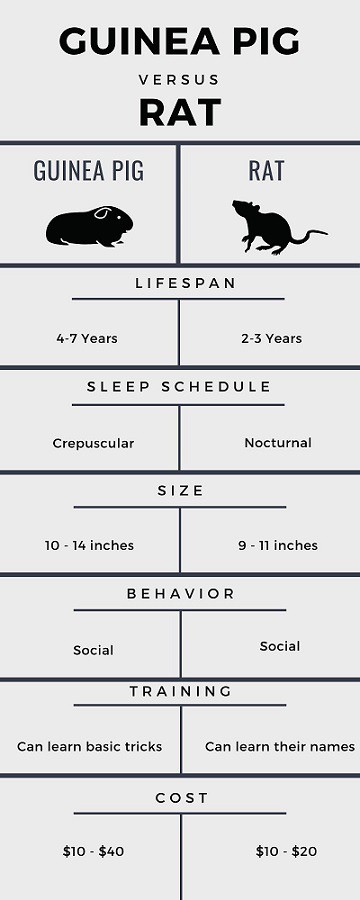
https://pocketsizedpets.com/pet-guinea-pigs-vs-pet-rats/

Guinea pigs and rats are among the many rodent pets that you can keep in your home. If you’re thinking of getting one of the two or both, it’s important to have a deeper understanding of these pets.
When thinking about guinea pigs vs rats you have to consider:
Along with that, there are other things you might probably want to know when comparing the two.
In this post, I’ll go over what you’ll need to know and how to handle these pets in the best way possible.
https://en.wikipedia.org/wiki/Reindeer
The reindeer (Rangifer tarandus), also known as caribou in North America,[2] is a species of deer with circumpolar distribution, native to Arctic, sub-Arctic, tundra, boreal, and mountainous regions of northern Europe, Siberia, and North America.[1] This includes both sedentary and migratory populations. Rangifer herd size varies greatly in different geographic regions.
Rangifer varies in size and colour from the smallest, the Svalbard reindeer, to the largest, the boreal woodland caribou. The North American range of caribou extends from Alaska through Yukon, the Northwest Territories and Nunavut into the boreal forest and south through the Canadian Rockies and the Columbia and Selkirk Mountains.[3] The barren-ground caribou, Porcupine caribou, and Peary caribou live in the tundra, while the shy boreal woodland caribou prefer the boreal forest. The Porcupine caribou and the barren-ground caribou form large herds and undertake lengthy seasonal migrations from birthing grounds to summer and winter feeding grounds in the tundra and taiga. The migrations of Porcupine caribou herds are among the longest of any mammal.[3] Barren-ground caribou are also found in Kitaa in Greenland, but the larger herds are in Alaska, the Northwest Territories, and Nunavut.[4]
![A List of Santa's Reindeers Names [And Their Personalities] | Santa Rules | Santa Claus](/media/user_uploads/forum/2020/12/1608872628956.jpg) Merry Christmas everyone! metmike
Merry Christmas everyone! metmike
He’s the purr-fect man for the job.
Subway maintenance supervisor Thomas Doerbecker has made it his business to rescue stray cats from Big Apple rail yards — plucking dozens of imperiled kitties out of harm’s way over the years.
He’s even kept a couple for himself.
“We’ll catch them, I’ll get them fixed and release them back,” Doerbecker told The Post. “If they’re good, you know, if they’re trainable and they’re not feral or wild and I think they could be adopted out… I’ll try to get them adopted out.”
Doerbecker said he got into the cat-catching business in 2017, when he was at work on Thanksgiving weekend when management came to him with an unusual request.
Transit workers had failed to lure a stray cat out of Brooklyn’s cavernous subways for two weeks, his boss said. Could the 27-year MTA veteran lend a hand?
“My boss knew that I take care of cats, so he said you want to go try? I said, yeah, I’ll go try,” Doerbecker, 56, recalled earlier this month.
“I brought a trap, a humane trap, like they use to catch raccoons and stuff like that. Just baited it with some cat food and put it out there. He went in and we caught him.”
Since the 2017 rescue, transit bosses have called on Doerbecker to secure stray cats from subway tracks another two or three times, by his count.
He’s saved “maybe 50” at the rail yard where he works in Sunset Park.
“I don’t want to see a cat running on a track that has trains running on it. Sooner or later they get hit,” he said.
“They get nervous. They’ll run and hide if a train comes, but they’re like a cat in the street. A stray cat in the street, sooner or later it’s going to get run over.”
Doerbecker, who lives with his wife on Staten Island, said she shares his love of animals. The pair have been fostering rescue kittens for more than half a decade.
He said he uses a spring trap to catch the cats.
Doerbecker prepared himself for the task by taking “trap, neuter, release” classes at an animal rescue center.
“They teach you how to catch,” he said. “They tell you what kind of trap to use. They’ll tell you how to do it, but it’s basically common sense.”
His family’s current litter consists of seven fosters plus six cats of their own.
Two of those felines are rail yard rescues named Peanut and Rusty, the latter for his red fur rather than the rusted rails from which he was saved.
“You got loose cats all around,” Doerbecker said of the transit system and its properties.
“It’s trucks running around. The trains running around. People driving high-lows. Heavy equipment around. I’ve seen cats run over and stuff like that. It’s not a real great environment for an animal.”
“I’ll get them fixed and release them back. If they’re trainable, and they’re not feral or wild, and I think they could be adopted out … I’ll try to get them adopted,” he said.
The lifelong pet lover kept dogs, cats, turtles, snakes, birds and fish as a “little kid” in Greenpoint — so helping animals to safety comes naturally.
“I like to help animals,” he said. “I’ve had animals all my life.”